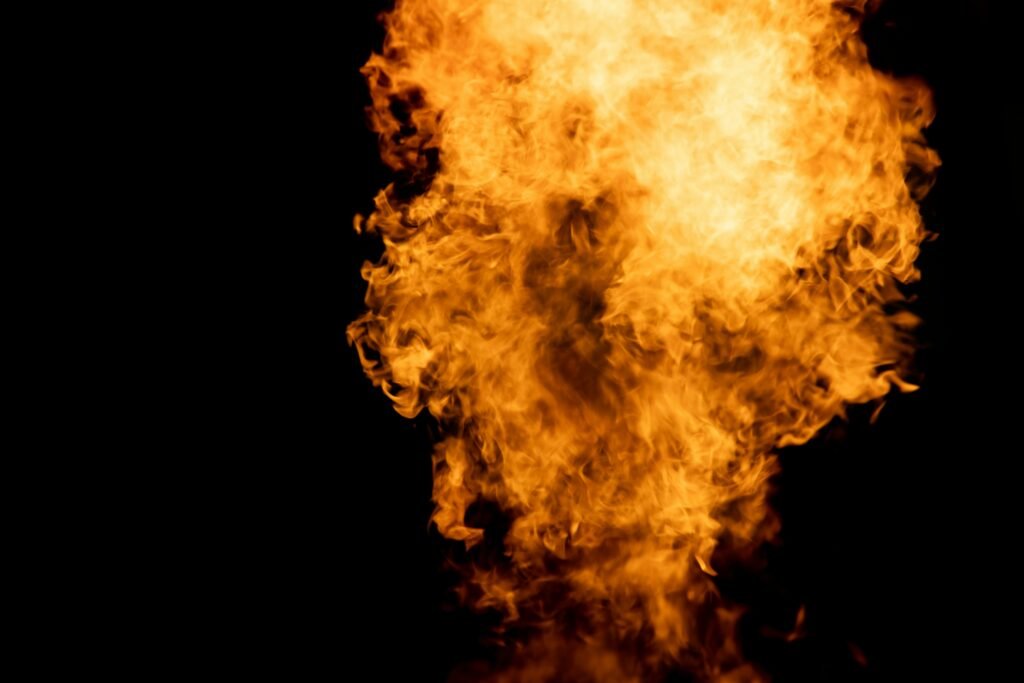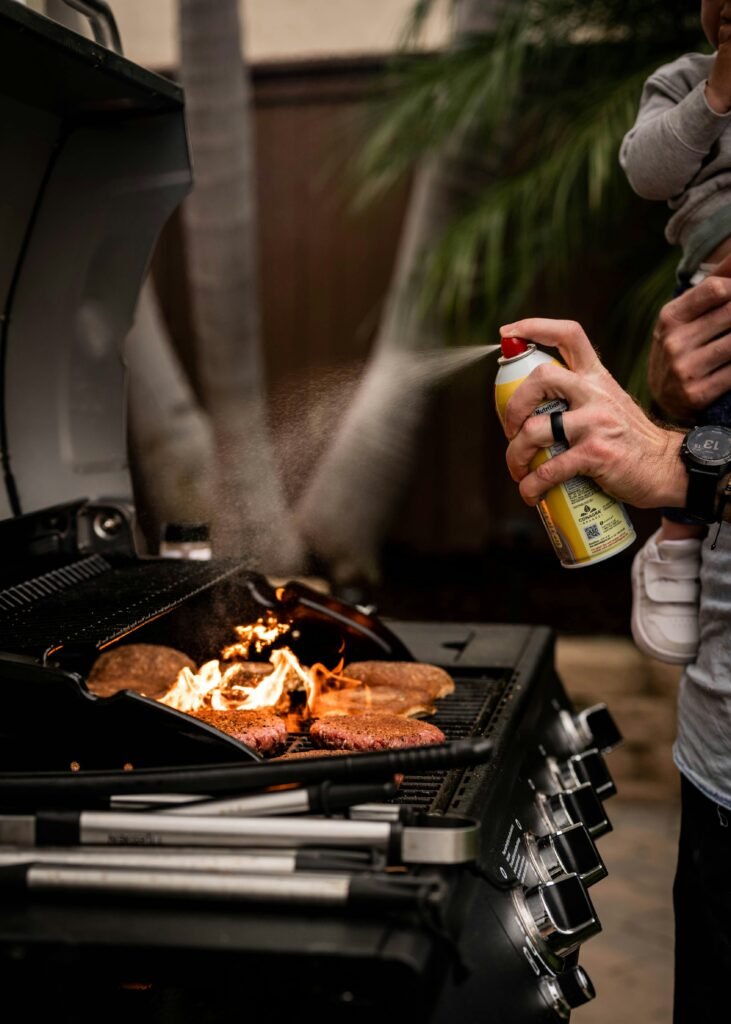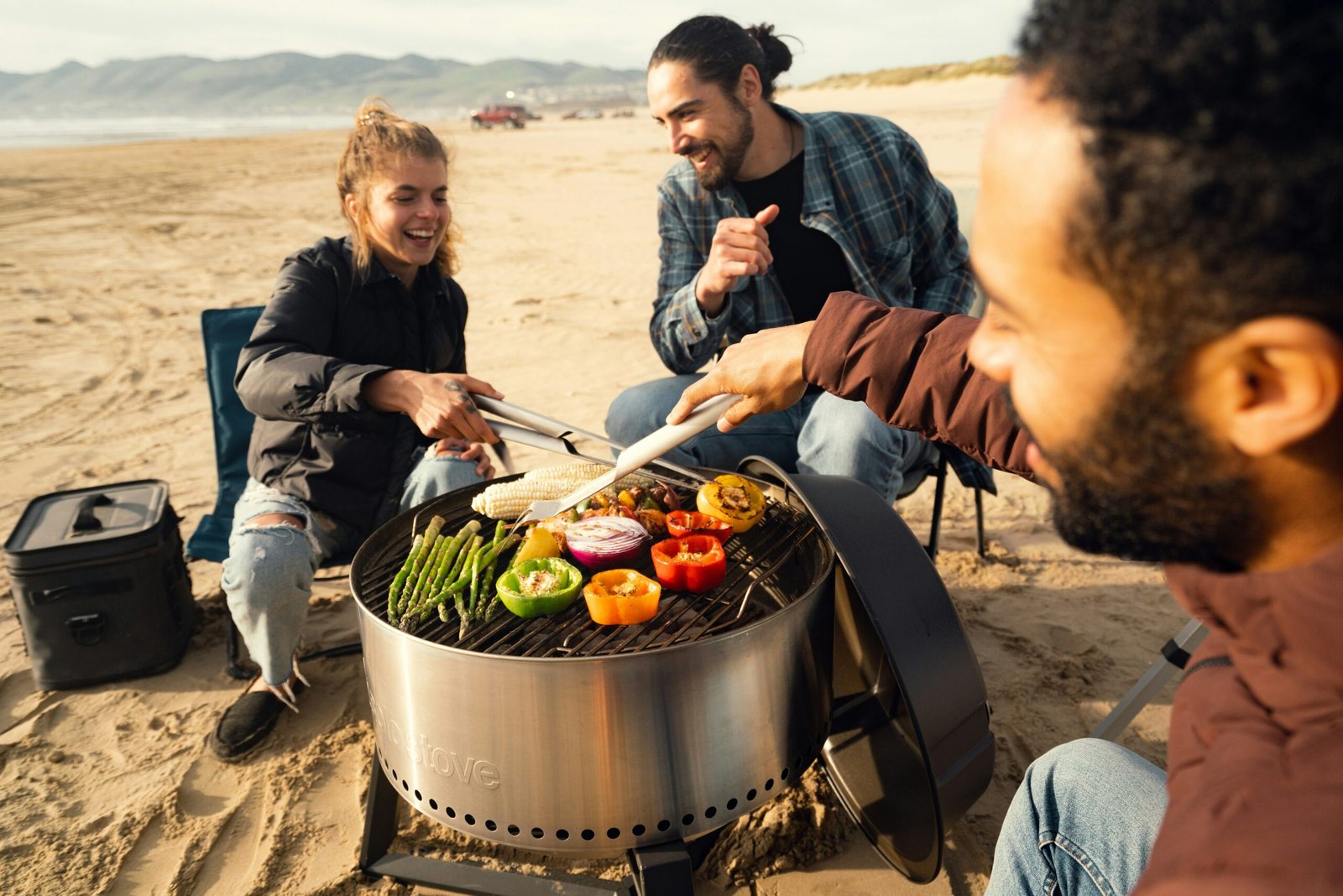You may have wondered how exactly those big metal tanks power your gas grill, and it’s a fascinating process. Propane, which is stored in these tanks, is a highly efficient and portable fuel that packs a powerful punch. When you turn on the grill, a valve is opened, releasing a small amount of propane into the grill’s burners. This propane combines with air to create a mixture that is ignited by the grill’s electric igniter or a match. As the propane is burned, it produces heat, which is then transferred to the cooking grates, allowing you to grill up delicious meals for family and friends. In this article, we will explore the science behind propane tanks and how they enable you to master the art of grilling. So, get ready to uncover the secrets behind these impressive powerhouses!

Understanding Propane
What is propane?
Propane is a versatile and clean-burning fuel that is commonly used to power gas grills. It is a hydrocarbon gas that is compressed into a liquid form and stored in propane tanks. It is a byproduct of natural gas processing and petroleum refining.
Chemical properties of propane
Propane is a flammable gas that is odorless and colorless. To ensure safety, a strong odorant called ethanethiol is added to the gas, giving it a distinctive smell that allows people to detect leaks. Propane has a boiling point of approximately -44 degrees Fahrenheit (-42 degrees Celsius) and becomes a liquid under pressure.
How propane is stored
Propane is stored in specially designed tanks that are equipped to handle the high pressure of the gas. These tanks are made of steel and have various sizes depending on the intended use. Propane tanks are typically filled to about 80% of their capacity to allow for expansion of the liquid as the temperature fluctuates.
The Mechanics of a Propane Tank
Components of a propane tank
Propane tanks consist of several key components that play a crucial role in storing and delivering propane. These components include the tank shell, which provides strength and protection, the valve, which controls the flow of gas, the gauge, which indicates the level of propane in the tank, and the relief valve, which releases excess pressure to prevent accidents.
How a propane tank stores gas
Propane is stored in its liquid form inside the tank, under high pressure. The tank is designed to withstand this pressure and keep the propane contained. The pressure inside the tank increases as the temperature rises, causing the propane to vaporize and flow through the valve when needed.
Propane tank sizes and their uses
Propane tanks come in various sizes, ranging from small tanks used for portable grills to large tanks used for residential heating or commercial purposes. Common sizes for gas grills include 20-pound and 30-pound tanks, which provide enough propane for several hours of grilling. It is important to choose the right size tank based on your grilling needs and the availability of propane refill stations in your area.
Safety Features of Propane Tanks
Overfill Prevention Device
Propane tanks are equipped with an overfill prevention device (OPD) to prevent overfilling, which can lead to leaks or accidents. The OPD is a float mechanism that shuts off the flow of propane once the tank reaches approximately 80% capacity. This allows for the expansion of the propane as the temperature changes and helps ensure safe operation.
Gas Control Valve
The gas control valve is a critical safety feature that allows you to control the flow of propane from the tank to the grill. It is typically located on the top of the tank and can be turned on or off using a switch or knob. This valve should always be closed when the grill is not in use to prevent gas leaks.
Pressure Relief Valve
The pressure relief valve is designed to release excess pressure from the tank in the event of a malfunction or overpressure situation. It is a crucial safety feature that helps prevent explosions or tank ruptures. The valve is set to open at a specific pressure level, which ensures that the tank remains within safe operating limits.
Connecting a Propane Tank to a Grill
Items required
To connect a propane tank to a grill, you will need the following items: a propane tank, a grill with a compatible gas connection, a propane regulator, a gas hose, and adjustable wrenches or pliers.
Steps to connect a propane tank
- Ensure that both the propane tank and the grill are turned off.
- Locate the gas inlet on the grill and remove the protective cap or cover.
- Attach the regulator to the propane tank valve by aligning the threads and turning it clockwise until snug.
- Attach one end of the gas hose to the outlet on the regulator, and the other end to the gas inlet on the grill.
- Check all connections for tightness and ensure that there are no leaks.
- Slowly open the propane tank valve by turning it counterclockwise.
- Use a soapy water solution to check for leaks by applying it to the connections. If bubbles form, there is a leak and the connections should be retightened.
- Once the connections are secure and there are no leaks, you can proceed to light the grill and start grilling.
Safety precautions during connection
When connecting a propane tank to a grill, it is important to follow these safety precautions:
- Ensure that both the propane tank and the grill are turned off during the connection process.
- Check all connections for tightness and leaks before turning on the gas.
- Use a soapy water solution to check for leaks by applying it to the connections.
- Never use an open flame or spark to check for leaks.
- Do not smoke or use any open flames near the propane tank or grill during the connection process.

Principles of Propane Combustion
Propane and Oxygen reaction
When propane is burned, it undergoes a chemical reaction with oxygen from the air to produce heat and light. This reaction is known as combustion and is represented by the following equation: propane + oxygen → carbon dioxide + water + heat. The heat produced during combustion is what powers the grill and allows for cooking.
Heat produced during combustion
Combustion of propane releases a significant amount of heat energy. This is why propane is an efficient fuel for grilling, as it quickly reaches high temperatures that are ideal for cooking. The heat produced during combustion can be controlled by adjusting the amount of propane and the airflow to the burners.
Byproducts of propane combustion
The combustion of propane produces carbon dioxide (CO2) and water vapor (H2O) as byproducts. These byproducts are generally considered to be environmentally friendly and have minimal impact on air quality. However, it is still important to ensure proper ventilation when grilling to prevent the buildup of carbon monoxide, which can be harmful in enclosed spaces.
Propane Flow from Tank to Grill
Role of the regulator
The regulator is an essential component that controls the pressure of the propane as it flows from the tank to the grill. It reduces the high pressure inside the tank to a safe and consistent level for the grill to operate properly. The regulator also acts as a safety device by preventing the flow of propane if there is a sudden increase in pressure, such as in the event of a hose rupture.
Gas control valve function
The gas control valve, located on the propane tank, works in conjunction with the regulator to control the flow of propane to the grill. It allows you to turn the gas on or off and adjust the flame intensity. By opening or closing the gas control valve, you can control the flow of propane and regulate the heat output of the grill.
The path gas follows once valve is opened
Once the gas control valve is opened, the propane flows from the tank through the regulator and into the gas hose. From there, it travels through the gas inlet on the grill and into the burner system. The gas is ignited at the burners, creating a controlled flame that heats the cooking surface and allows for grilling.

The Grill’s Burner System
Parts of a grill’s burner system
A typical grill’s burner system consists of multiple burners, each equipped with a gas valve and a flame diffuser. The burners themselves are constructed from metal tubes with small holes along their length, which allow propane to flow and create a flame.
How the burner works with propane
When the gas control valve is opened, propane flows into the burner system through the gas valves. The gas valves control the amount of propane that is released into each burner. As the propane flows through the burner tubes, it mixes with air and is ignited by a spark or a pilot light, creating a flame that heats the grill.
Adjusting flame strength in a grill
The flame strength in a grill can be adjusted by controlling the gas flow to the burners. This is typically done by turning the gas control knobs on the grill. By increasing or decreasing the gas flow, you can adjust the flame height and regulate the heat intensity on different parts of the grill. This allows for precise temperature control during grilling.
Factors Influencing Propane Consumption
Grill size and number of burners
The size of the grill and the number of burners directly affect propane consumption. Larger grills with more burners will require more propane to achieve and maintain the desired cooking temperatures. It is important to consider these factors when determining the size of the propane tank needed for your grilling needs.
Flame adjustment and grill temperatures
Flame adjustment and grill temperatures also play a role in propane consumption. Higher flame settings and hotter grill temperatures will require more propane to sustain the desired heat. It is important to find a balance between the flame strength and the cooking temperature to optimize propane usage and avoid unnecessary waste.
Duration and frequency of grilling
The duration and frequency of grilling will naturally impact propane consumption. Longer grilling sessions and more frequent use of the grill will result in higher propane usage. It is a good practice to monitor the propane levels in your tank and plan for refills or replacements accordingly to avoid running out of fuel during important grilling occasions.
Troubleshooting Propane Grill Issues
Common problems with propane grills
Propane grills may encounter various issues that can affect their performance. Some common problems include difficulty igniting the grill, uneven heat distribution, yellow or weak flames, irregular flame patterns, and low heat output. These issues can often be resolved through troubleshooting and regular maintenance.
Signs of low propane levels
There are several signs that indicate low propane levels in a tank. These include a weak or diminishing flame, difficulty maintaining consistent temperatures, and a sudden decrease in grilling time. It is important to monitor the propane levels and refill or replace the tank as needed to ensure uninterrupted grilling.
What to do in case of a propane leak
Propane leaks can be dangerous and should be addressed immediately. If you suspect a propane leak, it is important to take the following steps:
- Turn off the gas control valve on the propane tank.
- Extinguish any open flames or sources of ignition.
- Leave the area and evacuate to a safe location.
- Contact your propane supplier or emergency services to report the leak.
- Do not attempt to relight the grill or use the propane tank until the leak has been addressed by a professional.
Propane Tank Maintenance and Storage
Routine tank inspection
Regular inspection of propane tanks is essential for safety and proper functioning. It is recommended to visually inspect the tank for signs of corrosion, dents, or damage. Check the valve, connections, and hoses for any leaks or signs of wear. Additionally, ensure that the tank is stored in a well-ventilated and secure area away from sources of heat or ignition.
Proper storage of propane tanks
Propane tanks should be stored in an upright position in a well-ventilated outdoor area. They should be kept away from heat sources, open flames, and flammable materials. It is important to store propane tanks in a location that is easily accessible and away from children and pets. When storing tanks for an extended period, it is recommended to close the gas control valve and cover the tank with a protective cap.
Winterizing your propane tank
In colder climates, it is necessary to take certain precautions to prevent issues with propane tanks during the winter months. To winterize your propane tank, it is important to:
- Maintain an adequate propane level to prevent condensation.
- Protect the tank from freezing temperatures by insulating it with blankets or using a tank cover.
- Clear snow and ice from around the tank to ensure proper ventilation and accessibility.
- Avoid storing tanks indoors or in enclosed spaces, as this can create a safety hazard.
By following these winterization practices, you can ensure the safe and efficient operation of your propane tank during the colder months.

